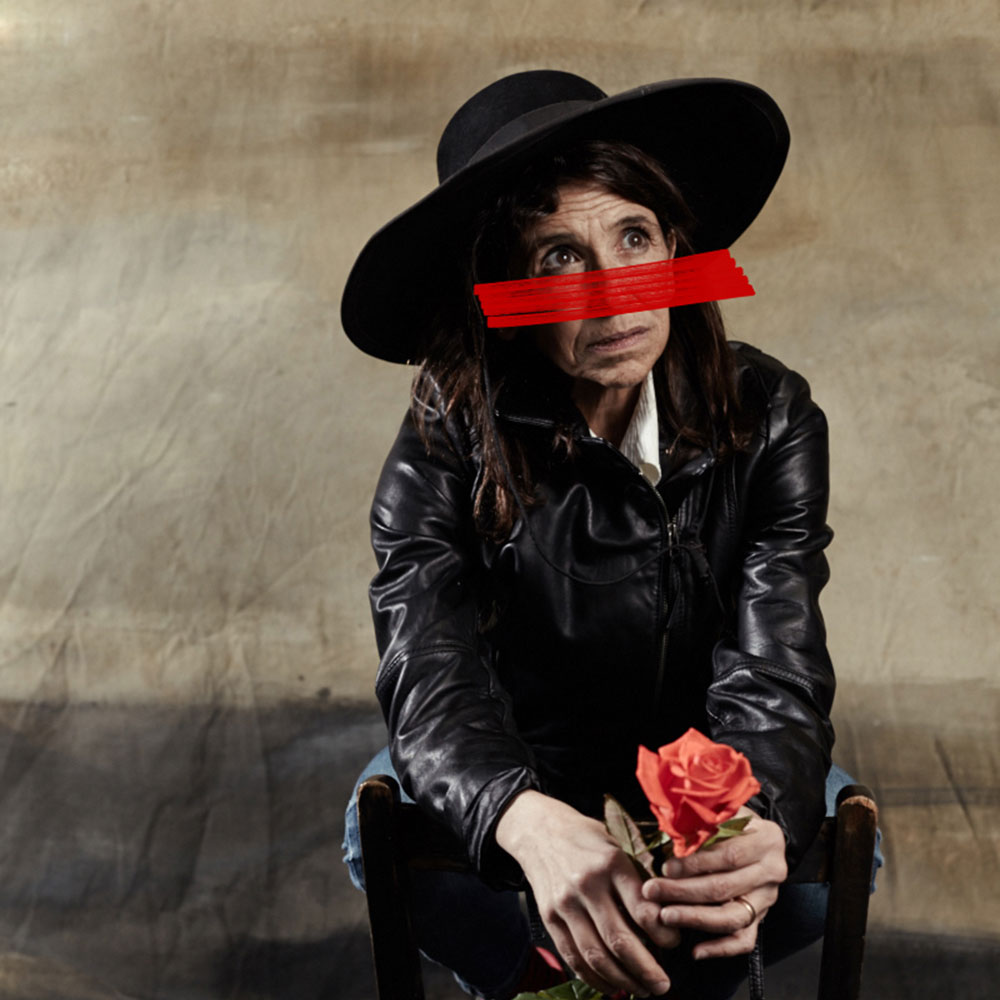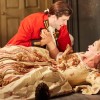Cyrano de Bergerac at Southwark Playhouse
reviewed for The Times, 23rd February 2016

Cyrano de Bergerac, Image Credit: Southwark Playhouse
![]()
Gender swapping is in fashion. Sometimes, a woman dressed as a man can teach us more than we realised about gender as performance or masculinity as bravado. Sometimes, as with Kathryn Hunter’s sinuous, tensile performance as Cyrano de Bergerac, it can give an important artist a chance to explore the great canonical roles so often written for men.
Sometimes, as with the hodge-podge of inexperienced young actresses who populate the rest of Russell Bolam’s amateurish, mis-paced production, it simply leaves you feeling that you’ve wandered into a particularly shoddy girls’ school sixth-form show.
Edmond Rostand’s 1897 play of hidden desire should lend itself well to queer settings: Cyrano, celebrated for that distended nose, is dashing, courageous and sharp with a sword, but considers himself too physically warped to hope for romantic love. Famously, he lends his eloquence to the conventionally attractive dimwit Christian, writing his love letters, even ventriloquising as Christian stands, tongue-tied, below the balcony of Roxanne, the woman they both adore.
Hunter, who suffered life-changing injuries in a car crash while at Rada, has long worked to push the limits of the perverse body on stage, and on playing men was well ahead of the curve. Her Richard III writhed and twisted, her Lear was in a wheelchair. But it’s hard here to put her drag performance into any particular context when everyone else on stage is doing it too — badly.
A scarred, female Cyrano watching a male Christian kiss the woman she loves might have caught at our hearts; here, Hunter’s charisma, as the milksop Game of Thrones star Ellie Kendrick awkwardly gestures towards the perma-pouting Sabrina Bartlett, only serves to show up Kendrick’s own inability to decide what male performance means.
Bolam is sensitive to the meta-theatrical nature of the text, although this seems at odds with Hunter’s hyper-naturalist performance. It doesn’t help that Glyn Maxwell’s adaptation appends a coy framing device (storytelling time for novices in a convent) and revels in knowing anachronism. “Let them eat cake,” quips a pre-revolutionary baker shortly after d’Artagnan’s cameo. Meanwhile, Richard Godin bathes the Southwark’s broad studio in light so warm we feel we’re in a barn. Shorn of magic.






